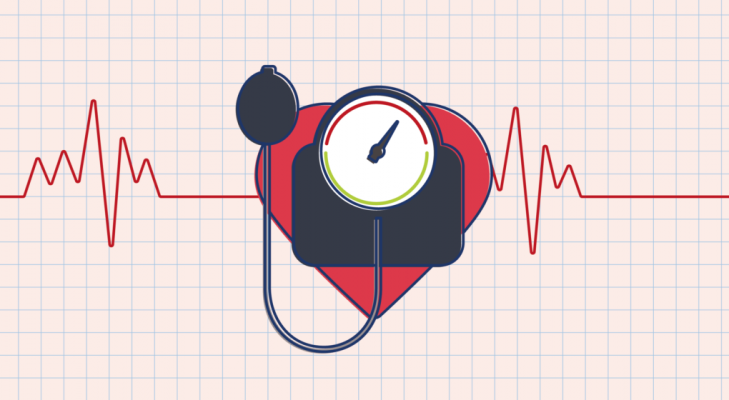In 1933, a British Paeditrican, Cicely Williams, working in the then Gold Coast (now Ghana), described a syndrome in children usually between the ages of six months and four years, who had been deposed from the mother’s breast by the birth of another child, marked by the failure to gain weight, swelling of hands and feet and a variety of changes in the skin. She named the condition ‘Kwashiorkor,’ the Ga word meaning ‘the deposed child.’ The state was associated with feeding young infants and children poor-quality food. Four of the five children she described died. Since records on the condition began, the death rate from kwashiorkor and other forms of severe acute malnutrition in children has remained high. 20 to 30 per cent of these children die, no matter where they are managed. Sometimes as high as half of them die.
The other forms of severe acute malnutrition, as the World Health Organisation currently calls it, are marasmus and marasmic-kwashiorkor. These children present the definition of misery in childhood. Those with kwashiorkor look miserable and wasted, with hardly any muscles left in the buttocks and other parts of the body. Both feet and legs are swollen and hair becomes spare and falls off easily. The skin has various kinds of affectation, including cracks, fissures, scaling, ulcers and infection. Those with marasmus are severely wasted, have wisened or old man look but no swelling. Marasmic-kwashiorkor presents a combination of features of marasmus and kwashiorkor. Severe stinging completes the spectrum of severe acute malnutrition
These children, for many reasons, are prone to infections which are often the immediate cause of death. But this, and other short-term problems, are not the only challenges these children face. Several studies have shown that those who survive later in life tend to have smaller head sizes and are not as intelligent as their peers who never had severe acute malnutrition. This deficit in intelligence tracks into adolescence. In addition, they end up being shorter or smaller than their peers. The females grow up to have pelvic sizes smaller than those of their peers, priming them for difficulties in childbirth in adulthood. These are the ones that may go on to have obstructed labour as adult women.
Severe acute malnutrition was largely unknown in Nigeria until the civil war when hunger became a powerful instrument of warfare in our land. Thousands of children developed swollen legs, abdomen and face, became wasted to their bones, had misery written on their faces, cried in hunger until they could no longer cry, and fell in droves on the wayside to the great beyond. Severely malnourished children became the hallmark and face of the Nigerian civil war. Soon after the war, we did not see such children again. Food and hope returned, and kwashiorkor became known only to a few physicians to whom the rare cases were referred. I was a medical student in the late 70s and early 80s. Suppose a child with kwashiorkor came to the hospital, our teachers quickly sent for us to go and see the rarity. Apart from the zeal and commitment of those great souls to teaching, I suspect that part of the urgency was because no one could tell which of them would survive and for how long. Then came the mid-80s, and kwashiorkor was back with a vengeance. Our children’s wards became filled again with infants and young children with wizened faces, swollen legs and abdomen, with very little muscle left hanging on their bones. Those were the days of “essential commodity”; we lined up for a few tins of milk, sugar, and chocolate drinks. While prices were being forced down by the then military government and traders were busy hoarding, swollen feet and legs were being put away in numbers under the earth. Then came another military government and introduced what it called Structural Adjustment Programme. A few more swollen faces and legs went under the ground until things appeared to stabilize at a not-so-large number of swollen feet and legs. Then another civilian government came, and we were promised ‘dividends of democracy. Debt relief was secured. To be honest, things appeared to improve, and there appeared to be more food for the children. The Child Survival Programme was introduced by the World Health Organisation: Growth Monitoring, Oral Rehydration. Therapy, Breastfeeding, Immunisation, Family planning, Female education, and Food security (which never came). The incidence of kwashiorkor declined. We had more hope for our children and, therefore, for our future. Nation of Nigeria, in the 2020s, kwashiorkor is back!!
Children and children’s wards are good barometers of the state of the nation. Currently, only about a fifth of children aged 0-23 months in our great country receive the minimum acceptable food that they need. All over the country again, our children’s wards are being filled with wasted buttocks, swollen feet, and legs. We are back full circle. The WHO and UNICEF estimate that two million children in Nigeria suffer from severe acute malnutrition, with states in northern Nigeria being the worst affected. Of these, only about 20% are reached with needed treatment. If the death rate for these infants and children in the best treatment centres is as high as 20-30%, I leave the nation to ponder how many of these children are dying in our communities unrecorded.
The tired-looking American Professor of International Health entered our classroom (yes, we had them here then). He asked, what was the cause of protein-energy malnutrition (the old name for severe acute malnutrition)? We told him about the classical, the dysadaptation and other theories. He appeared unimpressed. After a lot of discussions, he came out with one word, “POVERTY” and reminded us that malnutrition is a social disease. Malnutrition follows poverty. When poverty escalates, wasted bodies, swollen legs and feet follow, that is a given. Anyone that doubts that poverty has escalated in Nigeria should please visit our children’s hospital wards.
Other factors certainly contribute. The low rate of exclusive breastfeeding in the country, disruption of the food chain by insecurity, other natural and man-made disasters, childhood infections and recently the COVID-19 pandemic have made their contributions. If it is true that food supplies meant for alleviation of hunger at the peak of the pandemic were diverted, add that to the list of causes of the resurgence of malnutrition and salute those that did that for their blind courage. Every naira or dollar stolen from the national coffers, every kobo that is made to disappear and every high-rise building or private jet that comes from public funds adds to the numbers of wasted bodies, swollen feet, and hands in our children’s wards and those who die silently in our urban slums and villages. Think about it. The Russia-Ukraine war has disrupted global food supplies and insecurity in Nigeria has done the same to local food supplies. Unprecedented inflation rate and decline in real earnings, as the value of the naira continues to plummet, are recruiting children, even from middle-class families, into the ranks of the severely malnourished.
Only competent, honest and strategic economic management shall save us from going back full circle to the civil war situation. Kwashiorkor, marasmus, marasmic-kwashiorkor, or whatever you call it, is a disease of poverty, and Nigeria does not have to be poor.
Poverty, malnutrition, sickness, and death form a vicious circle. Malnutrition contributes to 45% of deaths in Nigerian children. Those who survive severe malnutrition cannot fulfil their intellectual and physical potential. Climbing the social ladder out of poverty becomes difficult. These children have reduced chances of growing up to become physically endowed to use sports as an exit route from poverty. The girls grow up to be adolescents and young adults with higher chances of obstructed labour and its consequences. Hypergamy is a phenomenon where poor young women marry into the upper social class and escape poverty. That is usually for the “prettier” and taller ones. Both are not usually the attributes of young women who grew up malnourished.
The circle has to be broken somewhere. UNICEF reports Community-based Management of Acute Malnutrition in northern Nigeria. In this programme, children who suffer severe acute malnutrition are brought once a week to a Primary Health Centre and are given Ready-To-Use-Therapeutic Food to treat the condition. Treatment usually lasts about eight weeks with good results. Let us hope for continuity and expansion to other parts of the country, but prevention is imperative. Efforts to encourage exclusive breastfeeding in the first six months of life and continued breastfeeding for two years or a minimum of one year, improved complementary feeding practices, immunisation, adequate management of diarrhoea and other infections, and family planning are key. But poverty is the bedrock of severe acute malnutrition. Eradication or, at least, the drastic reduction of poverty, must therefore be the bedrock of the solution. The link between corruption and poverty has been demonstrated again and again. There are currently feverish levels of political activities in the country, and millions of dollars and naira are reportedly being spent. Let no less feverish activities be seen towards poverty eradication. Let us be so embarrassed, as a nation, about the escalation of severe acute malnutrition that every naira and kobo available would be spent to eradicate poverty. Let the picture of the child with wasted muscles, swollen legs, and cracked skin come across our minds every time we see a kobo of public funds. What happens in our air-conditioned offices reflects on our children’s wards. Kwashiorkor is back but does not need to stay. Let us think about our children.
Prof. Ekanem of the Department of Paediatrics, University of Calabar, writes from Cross River State



Connect with us on our socials: